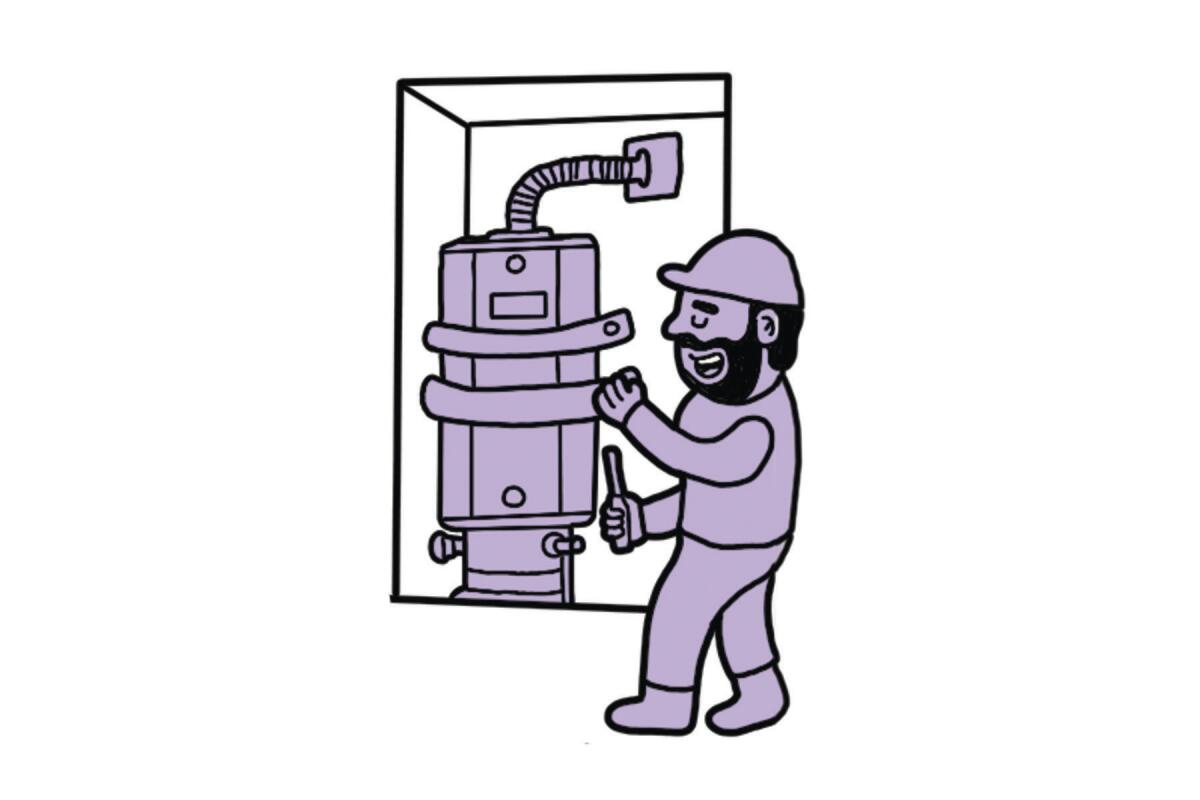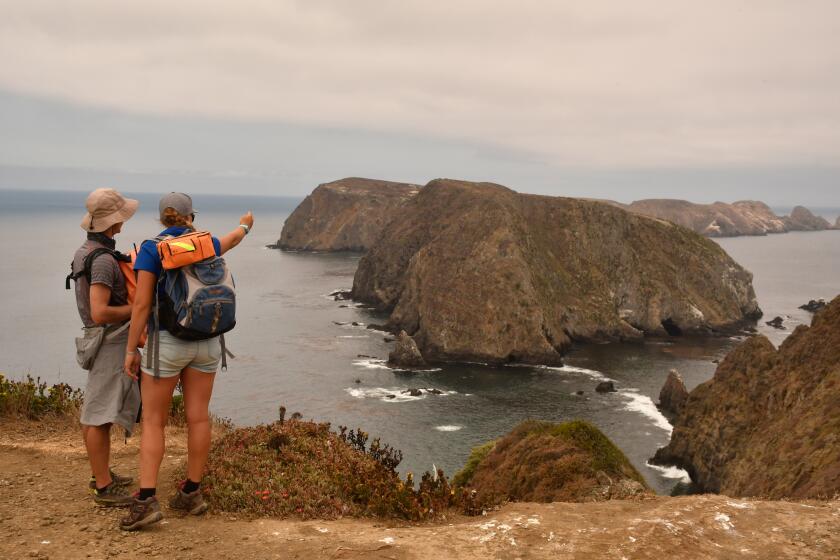Unshaken, Week 3: How to secure your stuff for an earthquake

- Share via
Hello. My name is Ada Tseng, and I work on the utility journalism team here at the L.A. Times. Welcome to Week 3 of Unshaken, the L.A. Times newsletter guide to earthquake readiness and resilience. Over six weeks, we’re breaking down disaster preparedness into digestible to-do lists so you can get ready without getting stressed.
We’re three weeks in. You should now have your kit for your home and on the go, with all the supplies that will help you in the aftermath of a major earthquake.
This week, we’re talking about securing the things inside your home and reducing potential sources of injury, with the help of Madalyn Amato, an L.A. Times intern who also has you covered on the science of earthquakes.
According to the Earthquake Country Alliance, two-thirds of all injuries sustained during an earthquake are a result of falling objects. So let’s do our best to avoid being injured inside the home.
What you’ll need
Begin by reviewing this list of equipment. Then read on to figure out what you have, what you want and what you need to make a hardware store run for.
— Wall straps or brackets (for bookcases, refrigerators, water heaters and more)
— Safety latches or child-proof locks (for kitchen cabinets)
— Museum putty (to secure picture frames to walls and objects to tabletops)
— Closed hooks (for picture frames and mirrors)
— Safety film (for windows, so shattered glass will remain in place)
— Emergency plug-in lights that automatically turn on during a power outage (keep one plugged in near your bed)
Agenda item: Make a hardware store run for any equipment you need to secure your living space.
Secure your water heater
If your water heater isn’t secured already (and it really should be), use two straps (you can buy these at a hardware store) to secure its top and the bottom to wall studs. This is important to prevent it from falling and causing gas leaks, fires or flooding. Note that this might be a job for a professional.
It’s also possible to use your water heater as a source of fresh water after a disaster — another reason you want it to stay upright. The average tank holds 30 to 50 gallons of water, according to Earthquake Country Alliance.
Secure other heavy things
First, your other heavy appliances. Anchor major appliances, such as refrigerators and stoves, with appropriate straps or brackets. Same goes for anything that could fall, such as a microwave perched on a shelf. Gas appliances, such as a stove, should have flexible connectors to reduce the risk of fire. Working with gas can be daunting, so call a plumber if you aren’t comfortable.

Then, your furniture. First, make sure your bookcases and heavy furniture are away from beds and from places people sit. Put the heaviest items in bookcases on the lower shelves to prevent them from becoming projectiles. Do the same for your file cabinets and other tall furniture.
Secure the top of each piece of furniture to two wall studs — the vertical framing boards behind the drywall that support the wall — rather than just the drywall, so it doesn’t budge. (Use an electronic stud finder, or tap the wall if you’re a pro. If we lost you at the word “stud,” that’s OK. But it’s important to know how to find these in your walls. You can ask for help at your local hardware store, or read up about them here.) You can use brackets or wall straps, which can allow furniture to sway without falling over.
Plus, your electronics. Secure your television, computers, lamps and anything with hazardous electronic components. Even without an earthquake, children can be injured or killed by falling televisions. These electronics are also expensive to replace.
Support our journalism
Subscribe to the Los Angeles Times.
Secure anything glass or hanging
Secure your kitchen cabinets. Install safety latches on your kitchen and bathroom cabinets. Broken glasses, plates and bottles can create a hazard.
Then, your picture frames. Closed hooks are the best way to make sure that your hanging items don’t fly at you during the shaking. Hooks with openings are less secure and can come loose during shaking. Hang mirrors, wall art or plants with closed hooks.
Do the same for anything that’s hanging from the ceiling (e.g., hanging light fixtures). Also, make sure none of these things are hanging near where people sit or sleep.
Use museum putty (also known as earthquake putty) or museum wax to secure picture frames and mirrors to the wall at their corners.
Protect anything else that’s glass. Cut feet from broken glass in picture frames and mirrors are a common source of injury during a major earthquake. Consider using plastic instead of glass to cover pictures — especially in hallways — to limit broken glass. There are also glass-less frames — including ones you can make yourself — and archival sprays with UV and water-resistant lacquer that help preserve digital photos.
You can also put security film on your mirrors and windows, which keeps your glass from shattering, in the same way your car’s windshield glass is protected from shattering completely if a rock hits it.
Secure your other decor. Use museum putty to secure flower pots or vases to the surfaces on which they sit, too. Although extremely durable, museum putty isn’t fail-safe, so keep larger, heavier objects on lower shelves.
Safely storing wine
If you have wine, consider storing it in racks with individual slots and a lip to hold the neck of each bottle. During the 1994 Northridge earthquake, restaurateur Piero Selvaggio lost $1 million worth of wine, but the ones that were stored this way were fine. Wines in wooden cases also mostly survived. Keep these cases or other racks low to the ground. More advice from wine experts can be found here.
Remove other potential hazards
Sleep clear of falling objects. Remove anything that could fall onto your bed, and make sure your bed is away from windows, which can shatter. You can also cover your windows with security film.
Remember from Week 1 of this course to keep some shoes near your bed, in case the quake happens at night, so you can walk around your home without cutting your feet on broken glass. If you need glasses, keep a pair near your bed, as well as a set of keys. Also, plug in an emergency light in your bedroom.
Store toxic and flammable substances safely. Make sure anything flammable or toxic is stored in a cool, dry place away from other materials — ideally on bottom shelves. This includes aerosol cans, cleaning products, pesticides, auto products, batteries, propane tanks and more. For extra security, you could add raised edges or rim guards to shelves or use bungee cords to keep things in place.
Clear out hallways and exits. Is anything blocking the way? Make sure you have at least two clear paths to get outside safely after the shaking stops.
Agenda items: Inspect your water heater, furniture, electronics, appliances, hanging items and valuables, especially around where people sleep or sit. Put safety latches on cabinets. Make sure nothing is blocking your exits.
Look for the next installment of Unshaken, the L.A. Times newsletter guide to earthquake readiness and resilience, in your inbox on Friday. Your fourth assignment will be to reduce the possibility of injuries outside your home. We’ll walk you through it. See you then. (Times subscribers can access the complete course here.)
More resources
— One of the most important things you can do to prepare for an earthquake is talk to your neighbors, writes seismologist Lucy Jones.
— Thinking of buying a premade earthquake kit? We unboxed four of them, from $30 to $300.
— If all you have to eat in your emergency kit are granola bars and canned tuna, here’s how to up your game. Plus here’s some advice from L.A. food people.
— How does California’s earthquake early-warning system work? And what apps should you have on your phone?
Sign up for Essential California
The most important California stories and recommendations in your inbox every morning.
You may occasionally receive promotional content from the Los Angeles Times.







